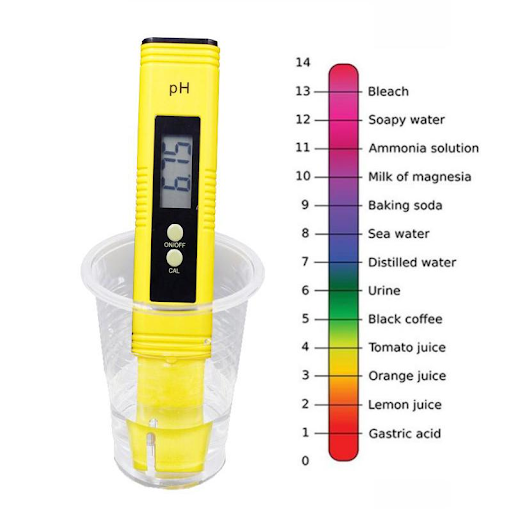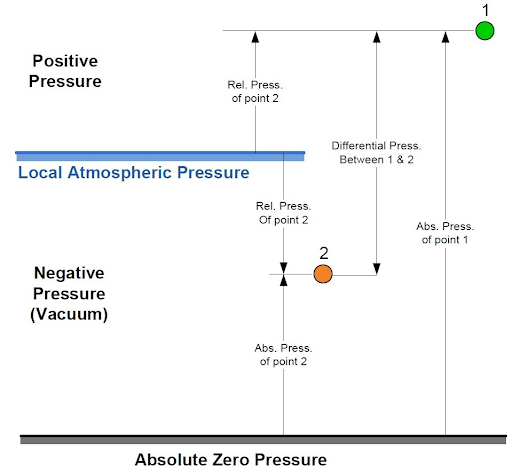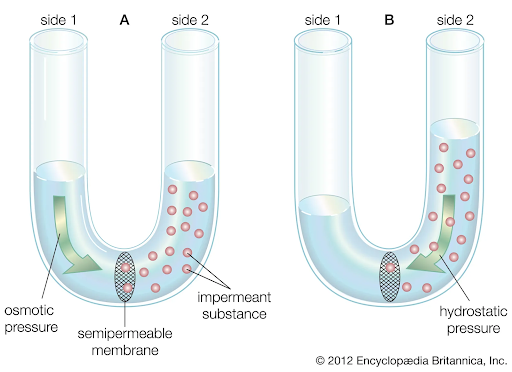Digital Thermometers: The Must-Have Tool for Accurate Temperature Readings
Did you know that the first recorded temperature measurement was taken in 170 AD by Claudius Galen, a Greek physician who used a live bird to estimate the body temperature of his patients? Fast forward to the present day, and we now have digital thermometers that can accurately measure our body temperature within seconds. Digital thermometers have become a crucial tool in modern healthcare, allowing medical professionals to diagnose and treat various illnesses with precision and speed. But how do digital thermometers work, and what are the benefits of using them? Let's dive in and find out.
Digital Thermometer History
The history of digital thermometers dates back to the mid-20th century when the first electronic thermometers were developed. In the early years, these thermometers were bulky and expensive, but technological advancements led to the development of smaller, more affordable models.
One of the earliest digital thermometers was the thermistor, invented in 1930 by Samuel Ruben and Martin Kamen. The thermistor is a type of temperature sensor that works by measuring the resistance of a material as it heats up or cools down. While the thermistor was an essential development in temperature sensing technology, it was not until the 1960s that the first digital thermometer was developed.
The first digital thermometer was developed by Dr. Otto Schmitt, an electrical engineer, and inventor, in the 1960s. His thermometer used a thermistor to measure temperature and displayed the results on a simple LED display. This thermometer was used primarily in scientific and industrial applications and was not widely available to consumers.
It wasn't until the 1980s that digital thermometers began to appear in homes and medical settings.
In 1984, the Danish company, Radiometer, introduced the first digital thermometer designed for home use. This thermometer used a thermistor to measure temperature and displayed the results on a small LCD screen.
Since then, digital thermometers have become commonplace in homes, medical facilities, and industrial settings. They are more accurate, faster, and easier to use than traditional mercury thermometers, and have become an essential tool for monitoring body temperature, food temperature, and environmental temperature. With the advent of wireless and internet of things (IoT) technology, digital thermometers can now be connected to other devices, making temperature monitoring even more convenient and efficient.
How do Digital Thermometers Work?
Digital thermometers use a thermistor, which is a type of resistor made from a material that changes its resistance in response to changes in temperature. The thermistor is a small sensor that is located at the tip of the thermometer probe. When the probe is placed in the mouth, ear, or under the armpit, the thermistor is exposed to the temperature of the surrounding area. This changes the resistance of the thermistor, which is then measured and converted into a temperature reading by a microprocessor. The temperature is then displayed on a digital screen, making it easy to read and interpret.
One of the main advantages of digital thermometers over other types of thermometers, such as mercury thermometers, is that they are much safer to use. Mercury is a toxic substance that can be harmful to humans and the environment, and mercury thermometers can break and release mercury if they are dropped or mishandled. Digital thermometers, on the other hand, do not contain any toxic substances and are therefore much safer to use.

Fig 1. Digitale thermo-hygrometer
Another advantage of digital thermometers is that they can take temperature readings much faster than other types of thermometers. This is because the thermistor can detect temperature changes more quickly than other temperature sensors. Digital thermometers can typically take a temperature reading within a few seconds, making them ideal for use with young children or patients who may be uncomfortable or uncooperative.
Finally, digital thermometers are generally more accurate than other types of thermometers. This is because the thermistor is very sensitive to temperature changes and can detect even small variations in temperature. Digital thermometers also have a wider temperature range than other types of thermometers, allowing them to be used for a variety of applications, including medical and industrial.
All Types of Digital Thermometers
There are several types of digital thermometers available, each with its unique features and applications. Some common types of digital thermometers include:
Oral Digital Thermometer
Oral digital thermometers are the most common type of digital thermometer and are used to measure body temperature orally. They consist of a small probe that is placed under the tongue to measure the temperature of the mouth. Oral thermometers are easy to use and provide an accurate reading within a few seconds. They are suitable for adults and children, but may not be appropriate for young children or people who have difficulty keeping the thermometer under their tongue.

Fig 2. Oral Digital Thermometer
Ear Digital Thermometer
Ear digital thermometers are used to measure body temperature by placing the thermometer tip into the ear canal. They are often used in hospitals and medical settings because they provide a fast and accurate reading of body temperature. Ear thermometers use infrared technology to detect the temperature of the eardrum, which is a reliable indicator of body temperature. Ear thermometers are easy to use and provide a quick reading, but they may not be suitable for people who have ear infections, earwax buildup, or small ear canals.

Fig 3. Ear Digital Thermometer
Rectal Digital Thermometer
Rectal digital thermometers are used to measure body temperature rectally and are often used for infants and young children. They provide a more accurate reading than oral thermometers but are less convenient to use. Rectal thermometers are inserted into the rectum and left in place for a few seconds to measure the temperature. They are suitable for infants and young children who may have difficulty holding the thermometer under their tongue or sitting still for an ear or forehead thermometer.

Fig 4. Quick-Read Digital Rectal Thermometer
Forehead Digital Thermometer
Forehead digital thermometers, also known as temporal artery thermometers, are used to measure temperature by scanning the forehead. They use infrared technology to detect the temperature of the temporal artery, which is located under the skin of the forehead. Forehead thermometers are easy to use and provide a quick and accurate reading of body temperature. They are suitable for people of all ages, but may not be as accurate as other types of thermometers.

Fig5. Infrared Digital Forehead Thermometer
Surface Digital Thermometer
Surface thermometers are designed to measure the temperature of objects, surfaces, and liquids. They are commonly used in industrial settings to measure the temperature of machinery, liquids, and other materials.

Fig 6. A surface digital thermometer
Wireless Digital Thermometer
Wireless digital thermometers use wireless technology to transmit temperature readings to a smartphone or other device. They are convenient to use and can be useful for monitoring temperature over time. Wireless thermometers consist of a small sensor that is placed on the skin to measure the temperature. The temperature readings are then transmitted wirelessly to a smartphone app, where they can be viewed and tracked over time.

Fig 7. Wireless Digital Thermometer
Infrared Digital Thermometers
Infrared digital thermometers use infrared technology to measure temperature without touching the skin. They are often used in industrial and commercial settings but can also be used to measure body temperature. Infrared thermometers work by detecting the temperature of the skin or object being measured using infrared radiation. They provide a quick and accurate reading of temperature and are suitable for people of all ages. However, they may not be as accurate as other types of thermometers and should be used with caution.

Fig 8. Two infrared thermometers, also known as IR thermometers or pyrometers.
How Can we Calibrate a Digital Thermometer?
Calibrating a digital thermometer is important to ensure accurate temperature readings. Here are some general steps for calibrating a digital thermometer:
- Fill a glass with ice and add a small amount of water until the glass is full.
- Stir the ice and water mixture to ensure that the temperature is evenly distributed and the temperature is at 0°C (32°F).
- Turn on the digital thermometer and insert the probe into the ice water mixture, ensuring that the probe does not touch the sides or bottom of the glass.
- Wait for the digital thermometer to stabilize and display the temperature reading. The thermometer should read 0°C (32°F).
- If the thermometer does not read 0°C (32°F), adjust it according to the manufacturer's instructions. Some digital thermometers have a calibration feature that allows you to adjust the reading manually.
- After adjusting the thermometer, repeat steps 3-5 to ensure that the thermometer is accurate.
It's important to note that the calibration process may vary depending on the type and model of the digital thermometer. Always refer to the manufacturer's instructions for specific calibration procedures. Additionally, it's recommended to calibrate a thermometer periodically, especially if it's being used frequently or if it's been dropped or damaged.
Digital Thermometer Accuracy
The accuracy of a digital thermometer can vary depending on several factors, including the quality of the sensor, the calibration of the device, and the environmental conditions in which the thermometer is being used.
Most digital thermometers are designed to provide temperature readings within a range of ±0.1°C (±0.2°F), which is generally considered to be accurate enough for most applications. However, the accuracy can be affected by several factors, such as the type of thermometer, the age and condition of the thermometer, and the location and conditions in which the temperature is being measured.
For example, oral digital thermometers may not be as accurate as rectal thermometers for measuring body temperature. Similarly, forehead digital thermometers may not be as accurate as ear thermometers for measuring body temperature.
It's important to note that digital thermometers can also be affected by external factors such as exposure to extreme temperatures or physical damage. Therefore, it's important to follow the manufacturer's instructions for use, calibration, and storage to ensure that the thermometer provides accurate readings.
Overall, digital thermometers are considered to be reliable and accurate for most applications. However, if high accuracy is required, it's recommended to use a calibrated thermometer or consult with a professional calibration service to ensure that the thermometer is providing accurate readings.
Digital Thermometer Advantage and Disadvantage
Digital thermometers offer several advantages and disadvantages compared to other types of thermometers. Here are some of the key advantages and disadvantages of digital thermometers:
Advantages
- Accuracy: Digital thermometers are generally more accurate than traditional mercury thermometers.
- Speed: Digital thermometers can provide temperature readings much faster than traditional thermometers, which can be particularly useful in medical settings.
- Ease of use: Digital thermometers are very easy to use, and many models come with features like large, easy-to-read displays and audible alarms to indicate when a reading is complete.
- Range of applications: Digital thermometers can be used to measure temperature in a wide range of settings, including homes, hospitals, laboratories, and industrial environments.
- Hygienic: Digital thermometers are generally considered to be more hygienic than traditional thermometers, as they can be easily sterilized between uses.
Disadvantages
- Batteries: Digital thermometers require batteries to function, and may need to be replaced periodically.
- Fragile: Digital thermometers are generally more fragile than traditional thermometers, and may be more prone to damage if dropped or mishandled.
- Cost: Digital thermometers are generally more expensive than traditional thermometers, although the cost has decreased significantly in recent years.
- Calibration: Digital thermometers may need to be calibrated periodically to ensure accurate readings, which can be time-consuming and require additional equipment.
- Interference: Digital thermometers may be susceptible to interference from external sources, such as electromagnetic radiation or other electronic devices, which can affect their accuracy.
Conclusion
Digital thermometers have become increasingly popular in recent years due to their speed, accuracy, and ease of use. They offer several advantages over traditional thermometers, including faster readings, greater accuracy, and the ability to measure temperature in a wide range of settings. However, they also have some disadvantages, such as the need for batteries, fragility, and the potential for interference from external sources. Despite these disadvantages, digital thermometers are widely used in homes, hospitals, laboratories, and industrial settings for their convenience and accuracy. To ensure that a digital thermometer provides accurate readings, it's important to follow the manufacturer's instructions for calibration, use, and storage.
To recap:
Q: What are digital thermometers?
A: Digital thermometers are electronic devices used to measure body temperature quickly and accurately.
Q: What are the different types of digital thermometers?
A: There are several types of digital thermometers, including oral, rectal, wireless, ear, infrared thermometer and forehead thermometers.
Q: What should I consider when choosing a digital thermometer?
A: You should consider factors such as accuracy, speed, ease of use, additional features, and your specific needs when choosing a digital thermometer.
Q: Why are digital thermometers better than other types of thermometers?
A: Digital thermometers are more accurate and faster than other types of thermometers, making them a more reliable option for measuring temperature.
Q: Where can I purchase digital thermometers?
A: You can purchase digital thermometers at most drugstores, online retailers, and medical supply stores. If you're looking for the best digital thermometers, check out our selection of top-rated products for all your temperature measurement needs. Shop now and stay ahead of the fever game!
Recent Posts
-
Booster Pump Troubleshooting and Maintenance: How to Fix and Prevent Common Issues
1. Introduction Imagine turning on your faucet only to be greeted with a weak trickle of water when …22nd Apr 2025 -
Energy-Efficient Booster Pumps: Selection and Tips for Maximizing Performance
1. Introduction Imagine never having to deal with fluctuating water pressure, noisy pumps, or skyroc …19th Apr 2025 -
Booster Pumps for Sustainable Water Systems: Irrigation and Rainwater Harvesting Solutions
1. Introduction Water scarcity is no longer a distant threat—it’s a reality affecting millions …16th Apr 2025




